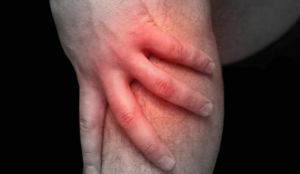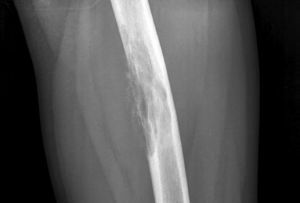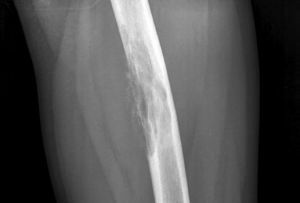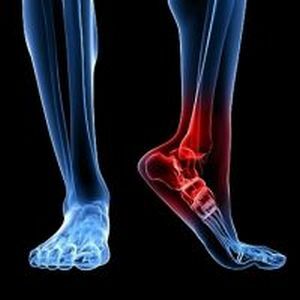 Often a person, feeling a pain in the leg or arm, thinks about stretching the ligaments or a usual bruise.
Often a person, feeling a pain in the leg or arm, thinks about stretching the ligaments or a usual bruise.
No one knows that leg pain and tooth pain can have one reason for this manifestation.
The whole thing is in such a disease as periostitis, which should be known more information to ordinary people.
Contents of the article
- Concept and other characteristics of the disease
- Causes of the disease
- Features of the periostitis of the tibia
- Classification of the disease
- How to detect the disease in time?
- Diagnosis of the disease
- How to choose an effective therapy?
- Complications and disease prevention
Concept and other characteristics of the
disease Periostitis - inflammation of the periosteum, which entails serious complications in the untimely treatment of .
The pustule is closely related to the bone, so the development of the disease affects soft tissues. The inflammatory process can begin on the outer layers or internal, leading to significant distinctive features and the nature of the treatment.
Inflammation often occurs on the jaw bones, which provokes an increase in the gums and subsequent suppuration. The simple name for such a manifestation is flux. It is easy to cure through physiotherapy procedures.
Causes of
Disease Inflammation of the periosteum is preceded by such aspects as:
- injuries and bruises, shin fractures or tendon ruptures;
- diagnosed allergic or rheumatic inflammation;
- toxins accumulating in the body, poisoning internal organs and upper layers of bones;
- administration of drugs with a high content of harmful chemicals and toxins.
If a person falls into a risk group, he needs to see a doctor for examination at the first manifestations of periostitis - pain in the limbs.
Features of the periostitis of the shin
Padding is a thin but dense shell that covers the surface of the bone.
It contains a huge number of blood vessels and nerves.
Inflammation of the periosteum is only localized in the inner or outer layer of the membrane at the initial stage.
Subsequently, the inflammation grows and can affect the bone itself, which leads to the appearance of osteoperiostitis.
In a particularly neglected case, the inflammation passes already to the bone marrow, contributing to the occurrence of osteomyelitis.

In the photo, the periostitis of the shin
Despite the above reasons for the emergence of pathology, there are several features in the "vulnerability" of the periosteum.
Inflammation can trigger regular running on an asphalt or concrete road.
It should also be noted that most trainers assure the benefits of running on the front of the foot.
As for the benefits of this kind of leg run, there can not be any positive aspect here. This method of landing on the asphalt surface leads to inflammation of the periosteum.
Classification of the disease
The inflammatory process can be localized in different parts of the body.
Depending on the site of inflammation of the periosteum, periostitis is allocated:
- tibia;
- of the tibia;
- of the fibula;
- humerus;
- calcaneus;
- periostitis of the jaw;
- periostitis of the bones of the nose.
Localization of the inflammation process directly affects the symptoms of the disease, as well as the choice of treatment methods. The signs and treatment also depend on the form of the disease.
Allocate a chronic and acute form of inflammation. Acute periostitis, characterized by purulent inflammation, often passes into the chronic course of the disease, since in most cases there is no timely treatment.
Types of periostitis:
- Simple - often the risk of tibia and ulnar process. A simple periostitis is provoked by a transferred trauma or an active inflammatory process.
- Purulent - in most cases formed in tubular bones. Presented form of the disease is formed due to the entry of any infection or the penetration and reproduction of bacteria( streptococci, staphylococcus) through the presence and untimely treatment of the wound, hematoma, abscess.
- Fibrous - provoked by prolonged irritation of the periosteum.
- Ossifying - is caused by prolonged irritation of the periosteum in small joints or cartilages with additional
 overgrowth of bone tissue.
overgrowth of bone tissue. - Tubercular - most of the diagnosed cases are occupied by children's pathologies. The presented species is characterized by fistula formation and purulent discharge clots.
- Posttraumatic appearance of - differs by the allocation of a trailing serous-mucous substance, which is caused by trauma.
- Syphilitic - the reason for the formation of the presented type of periostitis is in the preliminary diagnosis of syphilis in humans.
The types of disease can dramatically change the standard course of treatment, especially if there is a change in treatment.
How to detect the disease in time?
The initial symptoms of periostitis include painful sensations that occur every time you move or palpate.
No one will see an inflammation until a certain moment. This symptomatology is written off as a bruise or a stretch.
As a rule, the inflammatory process due to bruises and sprains ends 2-3 weeks after the injury.
The disease does not have the properties of self-elimination, so when untimely medication is "gaining momentum" and changes its shape.
At the next stage of its development, periostitis passes into a chronic ossifying form, where through the growth of bone tissue a person notices inflammatory foci with characteristic reddening.
If the time does not take measures and do not start treatment, the inflammation begins to swim, which leads to a purulent form of inflammation. In the affected area there are ulcers and thickenings.
Diagnosis of the disease
When a patient visits a clinic, the doctor conducts a thorough and thorough examination.
Sometimes only one examination of a specialist can diagnose the beginning inflammation of the tibia. To establish the diagnosis and nature of inflammation, some laboratory tests should be performed, on the basis of which the doctor will determine the cause of the pathology that has arisen.
Here are checked such indicators as:
- level of immunoglobulins;
- is checked for rheumatoid factor;
- , if there is a suspected presence of syphilis or gonorrhea, carry out PCR studies;
- treated with a C-reactive protein.
The patient is then subjected to X-ray examination. It should be noted that the presented method at the initial stages is ineffective, because it helps to establish the diagnosis only after two weeks of the onset of the inflammatory process.
In rare cases, the patient is sent for a duplex ultrasound scan. It is used only in case of suspicion of having a patient with varicose veins, which resulted in inflammation of the periosteum.
How to choose effective therapy?
Treatment of periostitis assumes complete absence of load on the leg during the first days of or until the present disease is completely eliminated.
 The patient is subjected to additional examination and treatment in the hospital.
The patient is subjected to additional examination and treatment in the hospital.
Only at the initial stages of the development of periostitis the doctor can allow to carry out treatment at home.
The treatment itself involves taking medications injected intramuscularly or intravenously, as well as in the form of tablets.
Here you take anti-inflammatory and anti-allergenic drugs, taking calcium and vitamins.
In addition, physiotherapy is applied:
- massage;
- application of dry heat;
- paraffin therapy;
- medical gymnastics.
In some cases, surgery is used - with purulent inflammation, with the presence of purulent discharge clots. The tibia is not subjected to surgical treatment. Doctors make an incision on the leg and eliminate purulent congestion.
By means of the performed operation, the recovery will take a longer time.
Complications and prophylaxis of
disease In case of untimely intervention or the admission of an error, purulent periostitis can lead to a chronic course of the disease and will lead to the appearance of such diseases as:
- osteomyelitis;

- is a phlegm;
- abscess;
- sepsis and other dangerous manifestations.
To prevent the described inflammation of the periosteum, it is necessary to follow the recommendations of a specialist who are based on wearing only orthopedic shoes, with low heels and in size.
When practicing sports, follow the trainer's instructions and do not allow excessive stress on the legs.
If you feel pain in your leg, consult your doctor for a complete examination and identify the causes. The sooner you diagnose periostitis and begin treatment, the less time will be spent on recovery.



